
Since my love for comics and graphic novels shines almost as brightly as my affection for fiction, I’m always excited to see what’s been nominated in the Best Graphic Story category for the Hugo Awards each year. And I’m happy to report that when it comes to the 2016 Hugos, this category is worth getting excited over. The nominees really capture some of the comic books gems 2016. I knew I had to tackle the category for Speculative Chic, if just for the excuse to re-read a few of them.
Below, I will go over each nominee, share my thoughts on them, and let you know of what I think their chances of winning are.
Black Panther: A Nation Under Our Feet, Book 1 (2016)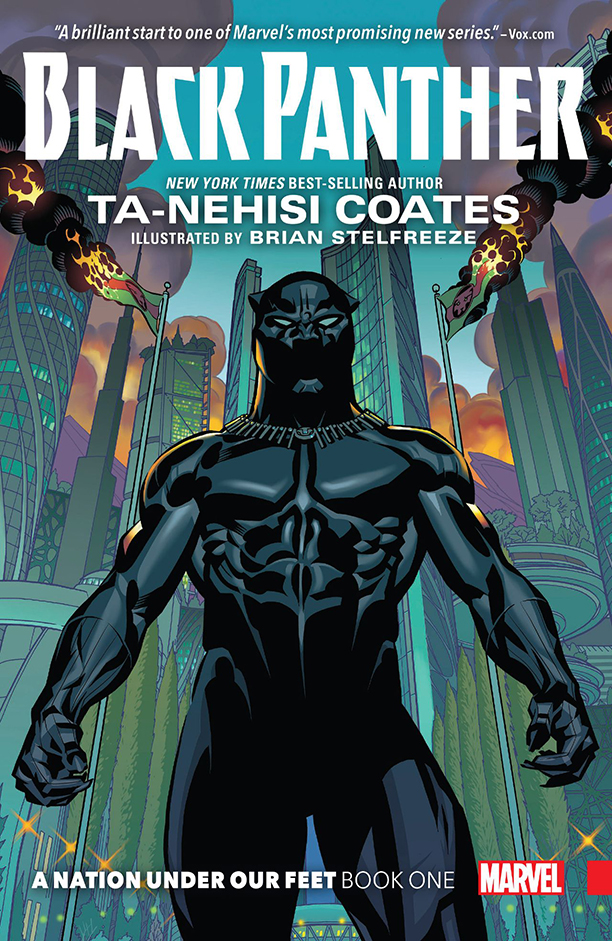
Writer: Ta-Nehishi Coates
Artist: Brian Stelfreeze
Color Artist: Laura Mar
Publisher: Marvel Comics
When I heard that the latest writer for Black Panther was not your typical comic book writer, but influential nonfiction scribe Ta-Nehishi Coates, I was a little surprised. Now, having read the entire A Nation Under Our Feet arc (which includes this first volume), I would argue that the comic makes a strong argument for similar out-of-the-box hiring. A Nation Under Our Feet, Book 1 is a unique, cerebral, comic that mulls over the role of leaders, and the complex relationship between a leader and their followers. In A Nation Under Our Feet, T’Challa returns home after spending time with the Avengers to find Wakanda falling apart, forcing him to act, not as a superhero, but as king of a nation in crisis.
For the most part, A Nation Under Our Feet eschews traditional good/evil dynamics for a more nuanced portrayal of its characters. The comic also features some truly impressive artwork by Brian Stelfreeze. I love his habit of presenting characters — or at least their skin — as pure black silhouettes, as it results in some stunning imagery. Laura Martin also deserves credit as colorist, for the beautiful pallet that she uses to bring Wakanda to life.
Unfortunately, while I certainly enjoyed A Nation Under Our Feet, it is personally my least favorite of the six nominees for the Hugo Award. Part of this is solely due to personal tastes (Cotes’s style is perhaps too weighty and cerebral for me), but I also felt that there were times when the concepts and ideas outshone the characters themselves, which I consider a weakness.
Will It Win? Probably not. While it it is a strong offering, A Nation Under Our Feet is not the friendliest comic to new readers, given that the storyline is built upon a large amount of back story. And since Hugo readers are fiction readers first, not comic book fans, I feel that in order for a title to win, that it needs to be accessible to people who are completely unfamiliar with the property. And that is something that Black Panther: A Nation Under Our Feet doesn’t seem to be going for.
Monstress, Vol 1: Awakening (2016) 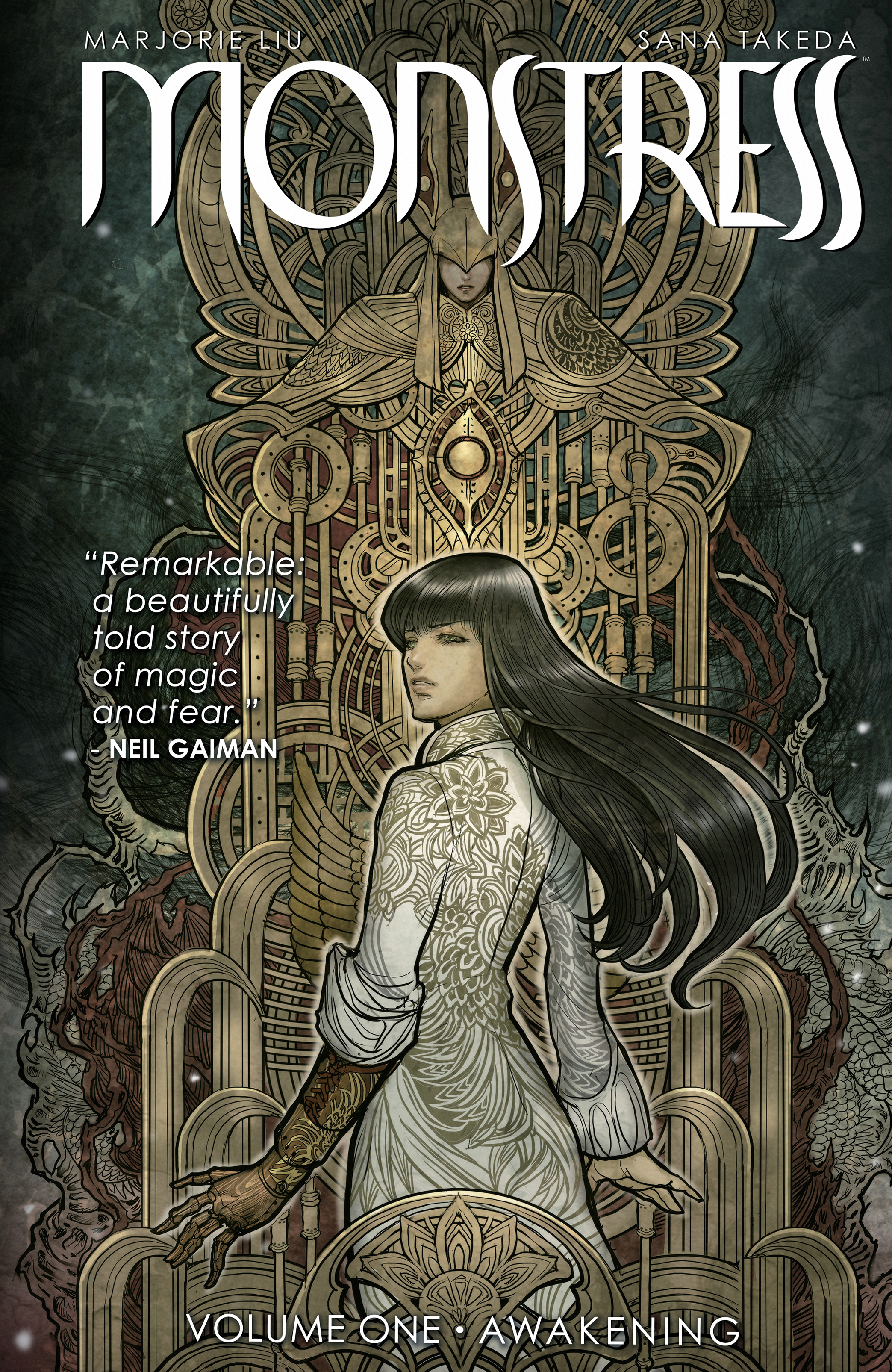
Writer: Marjorie E Lui
Artist/Color Artist: Sana Takeda
Publisher: Image Comics
I’ve already fangirled about Monstress multiple times on this blog, which should give you an idea of what a strong first offering Awakening is. Monstress is a prime example of a comic book that is firing on all cylinders, including high quality writing and artwork. Awakening delivers an epic grimdark fairy tale, set in a matriarchal society, and filled with Lovecraftian horrors. Our heroine, Maika Halfwolf, is a slave up for auction with complicated motivations, and an even most complicated past.
While Marjorie Liu has created memorable characters in Maika and her allies and enemies, when I think about Monstress, the first thing that comes to mind is just how mind-blowing the artwork is. Sana Takeda can pretty much draw anything, from sprawling urban areas, to the ornate fantasy costumes of the characters, to the chibi-style sidekicks. Her illustration is intricate, but never in a way that feels overly busy or overwhelming to the eye. Liu’s dark manner of writing and Takeda’s complex style of artwork appear to be a perfect match for each other, which is always satisfying to see in comics.
Will It Win? You know? It might! And I would be quite happy if it did. What may work against it is the fact that the subject matter can be quite dark, which is a lot for some readers to take. But, it’s not like dark topics have never won a Hugo Award before (last year’s excellent Best Novel, N.K. Jemisin’s The Fifth Season, proves that), so perhaps that won’t work against it as much as you might suspect.
Ms. Marvel, Vol 5: Super Famous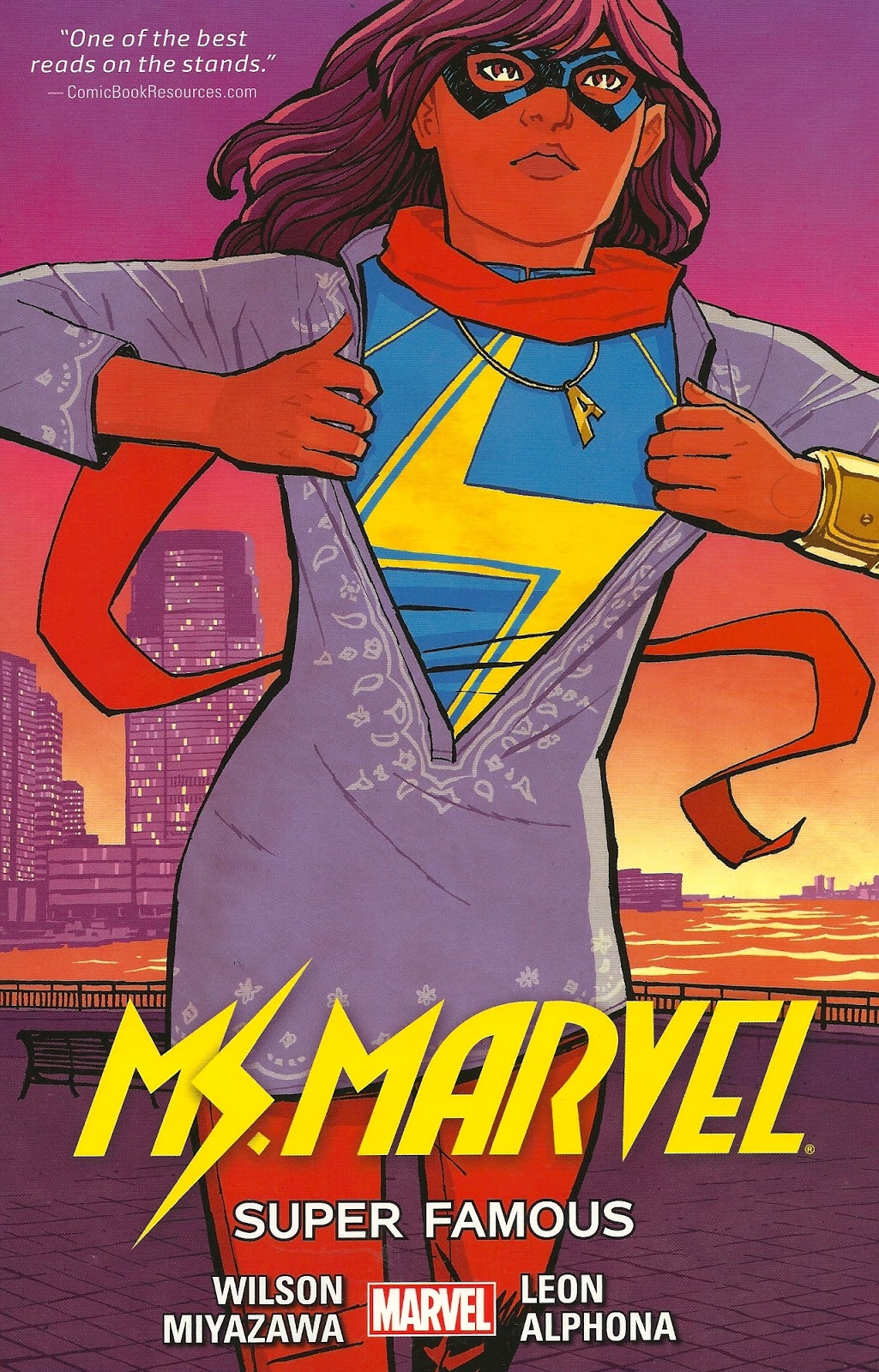 (2016)
(2016)
Writer: G. Willow Wilson
Artist: Takeshi Miyazawa, Adrian Alphona, Nico Leon
Color Artist: Ian Herring
Publisher: Marvel Comics
Despite the fact that half of the nominees on this list are technically superhero comics, only one of them actually feels like it belongs in the capes and cowls genre. And that comic is Ms. Marvel, Vol 5: Super Famous. Our friendly neighborhood superhero has achieved her dreams by becoming an Avenger. But as Kamala is about to learn, living your Best Life Ever! usually means that you’re super busy and lack time for the things that are really important, like family and friends.
What I’ve always found the most satisfying about the Kamala Khan version of Ms. Marvel is how easy it is to relate to this super nerdy superhero. Super Famous is divided into two arcs, each providing satisfyingly grounded storylines. In the first, Kamala must protect her beloved neighborhood from weaponized gentrification. In the second, the over-scheduled Ms. Marvel finds a way to use Asgardian technology to help her be three places at once. “The Trouble with Tribbles” style twist is predictable, but no less fun for it.
Regular artist Adrian Alphona returns, and is joined by Takeshi Miyazawa, and Nico Leon, who all provide some really nice artwork to compliment Kamala’s journey.
Will It Win? I must admit, while Monstress is arguably the highest quality comic on my list, Ms. Marvel is really where my heart is, and I would love to see her win. I just hope the fact that the graphic novel is a “Volume 5” doesn’t scare people away, as Super Famous is a super appropriate jumping on point for new readers. Ms. Marvel has won Best Graphic Story in the past (in 2015 for No Normal), which means that plenty of Ms. Marvel fans may be voting, but it also means that people may already feel as if she’s already received her reward.
Paper Girls, Volume 1 (2016) 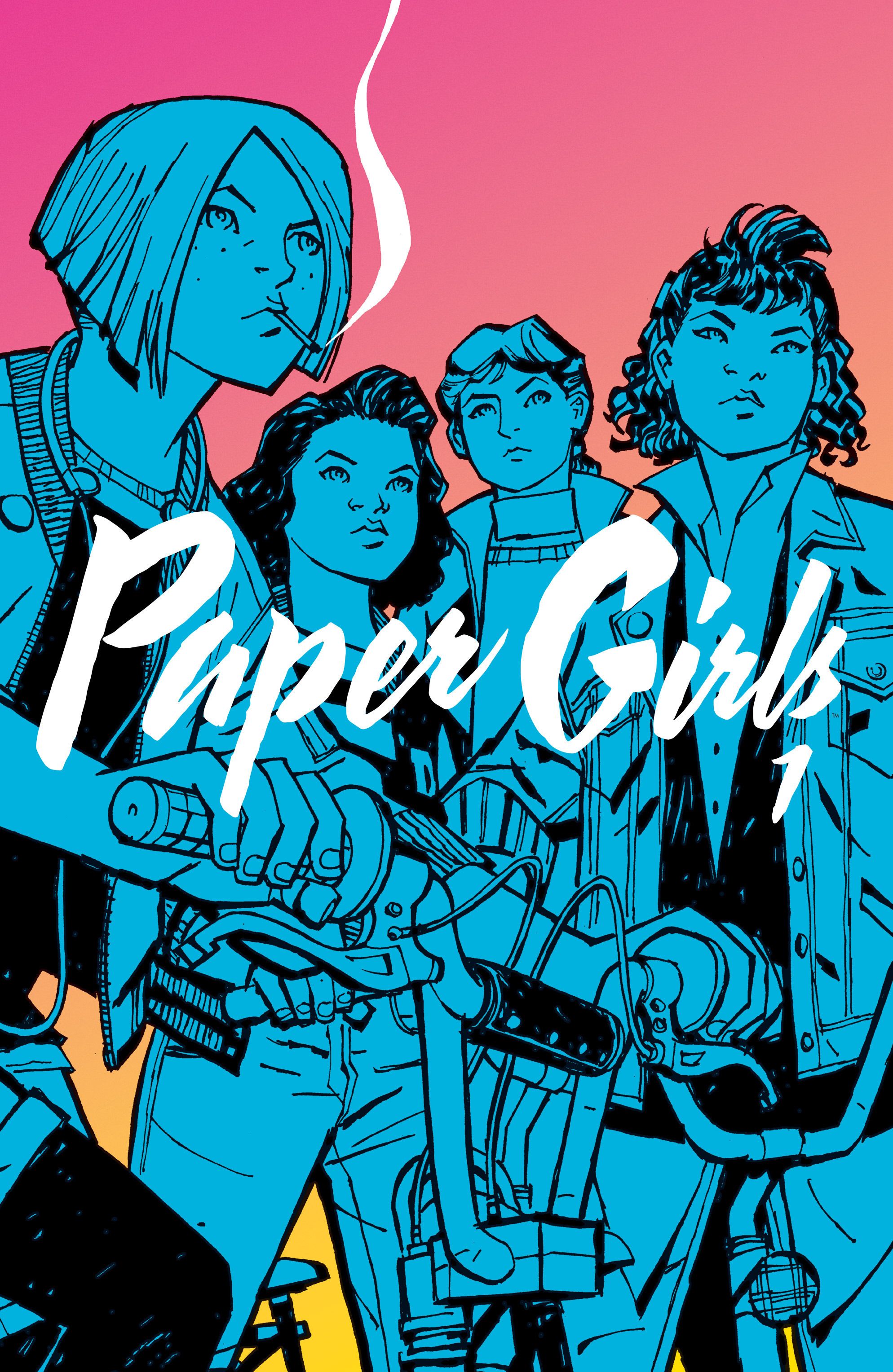
Writer: Brian K. Vaughan
Artist: Cliff Chiang
Color Artist: Matt Wilson
Publisher: Image Comics
Paper Girls, Volume 1 is a perfect fit for people who love wonderfully weird sci-fi stories based around an intriguing mystery. Only, the more you start to peel back the layers to solve said mystery, the more questions you have. Taking place during the 1980s, Paper Girls focuses on the lives of four twelve-year-old newspaper delivery girls, setting out on their delivery routes in the early morning the day after Halloween. They meet, become friends, then stumble into a time/reality bending war that will change the lives forever.
A big part of the appeal of Paper Girls is Brian K Vaughan’s unpredictable plotting. I didn’t know what to expect from page to page. Often, I found myself completely shocked. What takes this unique and surprising storyline to the next level is is Cliff Chiang’s amazing artwork. I knew from his work on Brian Azzarello’s run on Wonder Woman that this guy was really good at striking character designs, which Paper Girls completely takes advantage of. When it comes to characterization, the four leads are easy to sympathize with, even if some have stronger defined personalities then others, and the 1980s setting is a lot of fun.
Will It Win? While I enjoy wonderfully weird sci-fi stories based around an intriguing mystery, that’s certainly not to everyone’s tastes, which may end up working against Paper Girls. Also, the comic doesn’t shield you from some of the more homophobic hate speech of the 1980s, which is going to rub some people the wrong way. Still, Paper Girls has a lot going for it. It’s accessible to new readers, 1980s nostalgia is pretty big right now, and it’s clearly not in favor of the homophobic slurs used by one of its main characters. But what might push it into the winners spot is the fact that it’s written by the talented Brian K. Vaughan, who has already won a Hugo for Saga. Clearly, he has a strong following among Hugo voters.
Saga, Volume Six (2016) 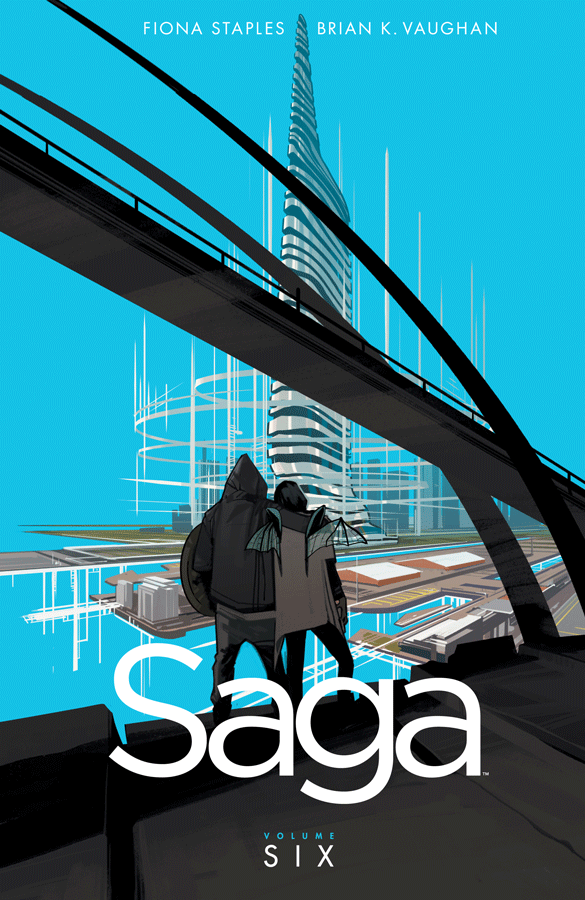
Writer: Brian K. Vaughan
Artist/Color Artist: Fiona Staples
Publisher: Image Comics
Saga is certainly becoming a mainstay at the Hugo Awards, as this is the fourth time the comic has been nominated. And with Volume Six, Saga doesn’t show any signs of slowing down. After being separated from her parents at the end of Saga: Volume Five, Hazel finds herself growing up in a mostly benign prisoner of war camp. But when her mixed heritage is exposed, she risks deadly consequences. That is, unless her parents can find a way to rescue her first.
While I enjoyed the story arc presented in Saga: Volume Six the first time I read it in single issue format, I also found it to be my least favorite arcs of the series. Now, having re-read it in graphic novel format, I find myself wondering what the hell I was thinking. Because while the comic has fewer BIG moments then in previous volumes, it’s still a great comic. Brian K. Vaughan masterfully utilizes a time jump to give us a new perspective on his beloved cast of characters. The artwork (done by the always amazing Fiona Staples) is expressive and vibrantly colored with memorable character designs. It’s also worth mentioning that Saga introduces an intersex character, which is not something you see in most comics.
Will It Win? Probably not. Yes, this is the fourth time the comic has been nominated for a Hugo, but it hasn’t actually won since the first volume was nominated back in 2013. The truth is that while Saga, Volume Six is very good, is it not accessible to new readers at all, so unless you’ve been reading along this entire time, you’re just likely to be confused. Regardless, it’s nice to see Saga continued to be nominated year after year.
The Vision: Vol 1: Little Worse Than a Man (2016) 
Writer: Tom King
Artist: Gabriel Hernandez Walta
Color Artist: Jordie Bellaire
Publisher: Marvel Comics
I am so glad that The Vision: Vol 1: Little Worse Than a Man was nominated for a Hugo, as it’s what convinced me to finally pick up this fantastic comic. When the story opens, The Vision has moved into the suburbs with his synthezoid family, but not everyone is comfortable with the AIs down the street. While The Vision flies off by day to fight evil, his family must learn how to fit in. And when their efforts fail, things take a dramatic turn for the worst.
I mentioned before that out of the three superhero titles nominated for this category, only one (Ms. Marvel) really fits into the classic hero v. villain archetype. But that’s because when it comes to Little Worse Than a Man, more often then not the villains are actually us, or humanity in general. Tom King isn’t the first one to use artificial intelligence to examine humanity and its prejudices, but he does a damn good job with it. Of course, that doesn’t mean that The Vision and his family are completely “good” either, which results in the comic going into some pretty dark territory (trigger warning for dog lovers!). While there are a few twists, it doesn’t take long before the readers realize the direction the comic is going. But rather than feel predictable, it fills the reader with an almost addictive feeling of dread. You know what’s going to happen, but for some reason you can’t stop reading as the pieces slowly fall into place.
Will it Win? This horror/superhero hybrid is a bit of a wild card. On one hand, it’s friendly to new readers (The Vision’s backstory is important, but the comic finds a unique way to lay it out for you), and the handling of its subject manner is very well done. On the other hand, I can see why this may not appeal to everyone’s tastes, whether that’s due to the style of narration (I liked it, but some people may find it invasive), or the fact that it’s not at all like your typical superhero comic. I wouldn’t mind seeing it win, but competition is quite stiff this year.
I must admit, it’s a rarity that I read all of the nominees for a single award and find myself enjoying each and every one, but that’s exactly what happened with this year’s Hugo Awards. Sure, there were some that I liked more than others, but there’s no denying that high quality of writing and artwork that can be found in every single one of these nominees. I wouldn’t mind seeing any of these comics take home the rocket this year, and hope that after reading this article, you’ll consider picking up one or two (or more!) as well.

What a great selection! I’m behind on Saga and Monstress. I stopped reading Ms. Marvel because of the crossover Civil War stuff, but the other titles look intriguing!
Yeah. To be honest, when it comes to award slates, they usually don’t line up with my personal tastes all that well, so I was kind of surprised when I saw the list!
PAPER GIRLS gets my vote. My enthusiasm for MS. MARVEL has faded and SAGA never really got off the ground for me (only read volume 1). MONSTRESS is still sitting near the top of my TBR pile.
Yeah, the more I think about it, the more I suspect that Paper Girls has a real chance to win.
That one REALLY intrigues me.
I still love Saga, but we stopped collecting individual issues and now wait on the hardcovers, so I’m behind. YOU MUST READ MONSTRESS. It’s absolutely gorgeous, and the story is so immersive.
Based on artwork alone, Monstress would win hands down, but it ended up only my #2 pick. Kamala Khan ftw!
Woo! Go Kamala!